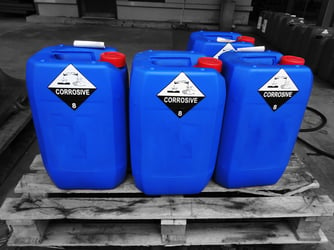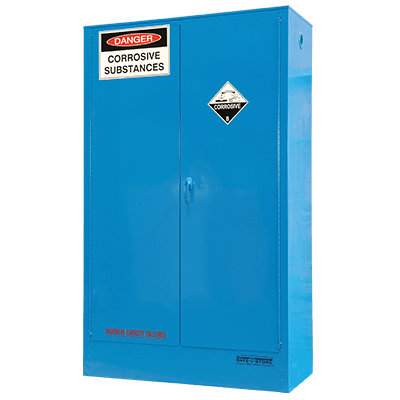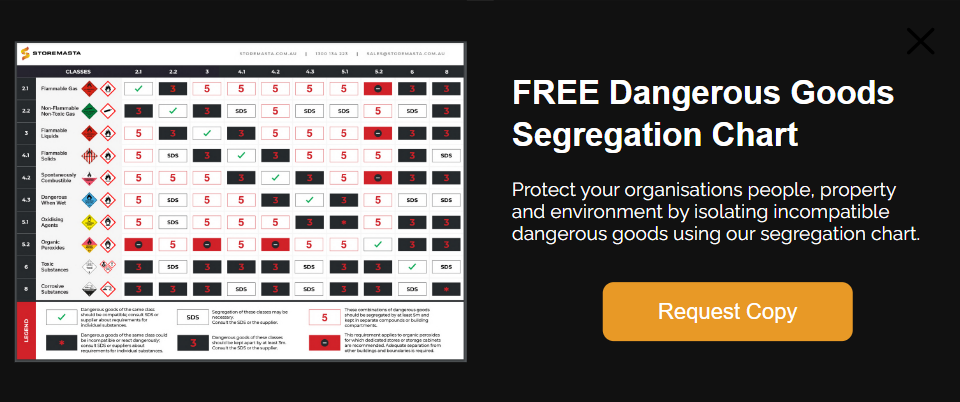What Ph Level Is Harmful to Humans
What Ph Level Is Harmful to Humans
Corrosive substances can pose a serious risk to the workplace. As a destructive substance, it's important to understand the hazardous properties of corrosive substances, so you can ensure they're used and stored in a safe , compliant manner.
What are corrosive substances?Corrosive substances are defined as materials that can attack and destroy, by chemical action, living tissue, organic compounds and metal. Recognised as "Class 8 Corrosive Substances" in The Australian Dangerous Goods Code (ADG Code), they have the capability of causing severe damage to people, property and the environment.
These corrosive chemicals are highly hazardous when they are inhaled, swallowed or come into contact with the eyes or skin. Exposure to these materials can result in the burning of human tissue, which can cause severe scarring, lung problems and even blindness. Severe exposure to corrosive substances can be fatal.
And while we are all familiar with everyday examples of corrosion such as rusty iron, corroded batteries or rusted out cars, corrosive substances can quickly damage or destroy property, transport and other goods that they come into contact. Even a small leak or spill of a corrosive substance requires immediate attention to prevent the destruction of property and the contamination of the immediate environment.
 Corroded Metal
Corroded Metal
So how can you properly manage the handling and storage of corrosive substances in your workplace? First, it's important to understand the properties of the substance so you can formulate the right strategy to ensure it's safely used and contained. And one of the key measures of a liquid's corrosive properties is its pH level.
What is a pH Level?
Ranked on a scale between 1 and 14, pH is a measurement of how acidic or basic a water-soluble substance is.
If a substance is considered neutral, such as pure water, it will have a pH level of 7. As the substance becomes increasingly acidic, the pH level decreases from 7. For example, lemon juice has a pH level of 2, coffee may have a pH level of 5 and rainwater has a value of 5.5. Anything with a pH level above 7 indicates that the substance is alkaline. For example, some hand soap may have a pH level of 10, while bleach may have a pH level of 12. Again, as the pH value increases, the alkaline level also increases.
 pH Scale
pH Scale
A pH of 4 is ten times more acidic that a pH of 5, and 100 times more acidic than a pH of 6. Likewise, a pH of 13 is 10 times more alkaline than a pH of 12, and 100 times more alkaline than a pH of 11.
Therefore, the more acidic or more alkaline a substance is, the more effective it will be as a corrosive substance. Acids have a pH level lower than 7, while bases have a pH level higher than 7.
If a substance is deemed as highly corrosive, it must be stored in compliant storage facilities such as a corrosive storage cabinet . These purpose-built cabinets will effectively minimise the hazards that corrosive substances pose upon your workplace, such as dangerous vapours and spills.
But what are some examples of commonly used acids and bases? We will now discuss some examples of commonly used acids and bases.
What Are Some Examples Of Corrosive Acids?
Hydrochloric Acid
Hydrochloric acid (HCL) has a pH level of 1.1 at 38% concentration. If this acid accidently came into contact with your eyes or skin, it would immediately begin to dissolve your skin tissue. HCL is commonly used in the production of batteries, fireworks, leather and building materials. It is also commonly used in water and salt purification. Your body also produces Hydrochloric acid to assist your digestive system.
Sulfuric Acid
Sulfuric acid (H 2 So 4 ) has a pH of 0.5 at a concentration of 33.5%, which is equivalent to the concentration of sulfuric acid used in lead-acid batteries. Sulfuric acid is one of the most important industrial chemicals. It plays a part in the production of a lot of manufactured goods. Despite being primarily used in the production of fertilizers such as superphosphates, sulfates and ammonium phosphates, sulfuric acid is also widely used in the production of dyes, paints, fabric pigments, explosives, lubricants, metals and batteries. Sulfuric acid is a dehydrating agent and it reacts violently with water. When in contact with water, sulfuric acid will boil and splash. If sulfuric acid is released into the atmosphere, it can cause acid rain which is very harmful to the environment.
 Corrosive Acid
Corrosive Acid
Nitric Acid
Nitric acid (HNO 3 ) has a pH level of 1.2 at standard commercial concentration of 68%. The uses of Nitric acid are very similar to those of sulfuric acid. Nitric acid is used in the production of ammonium nitrate, plastics, dyes and explosives such as nitroglycerin and TNT. When nitric acid is combined with HCL, a fuming liquid, known as aqua regia is formed capable of dissolving gold and platinum. Nitric acid is also utilised in the medical industry to remove warts and as a colorimetric test to distinguish drugs. When exposed to the skin, nitric acid can cause severe burns, ulceration, dermatitis and yellow staining. As a corrosive substance, nitric acid is capable of dissolving many materials including most metals. For ultimate safety nitric needs to be stored in a compliant safety cabinet to prevent the risk of acid burns and damage to expensive property, plant and equipment.
Chromic Acid
Chromic acid (H 2 CrO 4 ) has a pH level of approximately 3.03. It is used as a cleaning agent and in the manufacturing of glazes, colored glass and chromium plating. In the past, it has commonly been used as a bleach to dye hair. Due to the high impact chromic acids have on the environment and human health, it's no longer used for this purpose. Again, chromic acid will burn your skin and safe handling and storage is crucial.
Acetic Acid
Acetic acid (CH 3 COOH) or as we more commonly know it, vinegar, has a pH of 2.4 at 5% dilute solution. Acetic acid is primarily used in the production of vinyl acetate monomer, followed by ester production and used to create solvents for inks, paints and coatings. Acetic acid has proved to be widely useful in the medical industry, especially in the treatment of cancer amongst many other conditions such as ear infections. And of course, acetic acid is used in food production. Surprisingly enough, vinegar is only 4-18% acetic acid by mass. Despite seeming reasonably harmless, acetic acid, specifically in concentrated amounts can be considerably harmful to human health and the environment.
Some Examples Of Corrosive Bases
Ammonium Hydroxide
Ammonium hydroxide (NH 4 OH) has a pH of 10.09 and is often used as a glass cleaning agent in various commercial and industrial products. You will also find ammonium hydroxide in food items where it is used as a food additive to the correct level of acidity. This corrosive base is also commonly used as a refrigerant and can be found in a range of products including detergents, textiles, soaps, ceramics, pharmaceuticals, inks and explosives. As ammonium hydroxide may cause extensive tissue damage if it is exposed to the skin, it must be stored in a safe and compliant manner .
Potassium Hydroxide
Potassium hydroxide (KOH) has a pH of 10.98 and is commonly used in the production of fertilisers, biodiesels and soft soaps. Potassium hydroxide is used as an electrolyte in a process commonly referred to as chemical cremation or resomation.
Sodium Hydroxide
Sodium Hydroxide (NaOH) has a pH of 13. Although it is predominantly used in the paper industry, it plays an important role in tissue digestion and in the manufacturing of sodium salts and detergents. Sodium hydroxide can also be found in cleaning agents and as a pH regulator in organic synthesis and metal production. If sodium hydroxide is not handled and stored in a safe corrosive storage cabinet , it can be dangerous to human health and the environment.

Corrosive Substance Storage Cabinet - 250L
Sodium Hypochlorite
Sodium hypochlorite (NaClO) has a pH of approximately 13 at 10-15% concentration. It is used in various industries, including waste management, as a bleach or disinfectant. Sodium hypochlorite also has other applications, including as an antiseptic in the medical industry and as a pesticide in the agricultural industry.
Storing Corrosive Chemicals & Substances In The Workplace
From mining operations to hospitality venues, a diverse range of industries regularly use corrosive substances at their workplaces. Now that you have a better understanding of corrosive substances and their pH levels, it's important to consider proven strategies that will minimise their harm, including the safe storage of corrosive substances. One important aspect of safe storage is ensuring that class 8 corrosive substances are segregated from other incompatible classes of dangerous goods. If you'd like to learn how to segregate corrosive substances from other incompatible classes of dangerous goods, download our free dangerous goods segregation chart by clicking on the image below.

Source: https://blog.storemasta.com.au/examples-corrosive-substances-ph-levels
Posted by: wainwrightyould1955.blogspot.com

0 Response to "What Ph Level Is Harmful to Humans"
Post a Comment